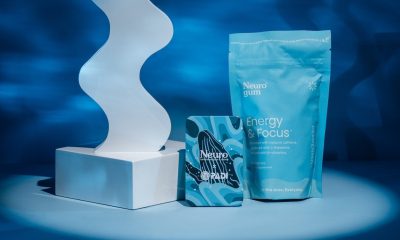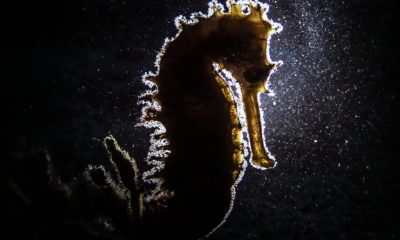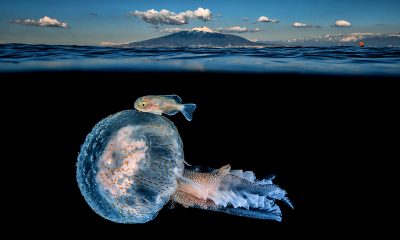News
Antarctic Seals image wins Underwater Photographer of the Year 2020

A balletic photograph of crabeater seals swirling around an iceberg sees French photographer Greg Lecoeur named Underwater Photographer of the Year 2020.
Lecoeur’s photograph triumphed over 5500 underwater pictures entered by underwater photographers from 70 countries around the world.

© Greg Lecoeur/UPY2020
To shoot “Frozen Mobile Home” Lecoeur travelled to Antarctica on a small yacht, enabling him to document the wildlife on icebergs as they drift at the whim of polar currents.
“Massive and mysterious habitats,” explains Lecoeur, “little is known about how wildlife thrives around these mobile homes. Icebergs fertilize the oceans by carrying nutrients from land that spark blooms of marine life and also provide homes for larger animals, like these crabeater seals.”
Lecoeur lives in Nice, France, but works full time as a photographer, travelling the world documenting life in the oceans.
Chair of the competition judges, Dr Alexander Mustard MBE, commented: “The motion of these seals and the ethereal landscape of the pitted iceberg takes our eyes on a journey through the frame and transports us to the icy ocean of Antarctica.”
In the same contest, Italian photographer, Pasquale Vassallo was named Marine Conservation Photographer of the Year 2020 for his photo, revealing the final moments of a tuna’s life as it is hauled up towards a fishing boat.

© Pasquale Vassallo/UPY2020
Vassallo took the photo “Last Dawn, Last Gasp” in the Mediterranean Sea, near his hometown of Naples. “This winter I accompanied some local fishermen,” explains Vassallo. “Diving at dawn, I followed the nets as they were hauled up from the depths, revealing a conveyor belt of dead and dying wildlife, such as this little tunny tuna gasping for life.”
Competition judge Peter Rowlands commented: “If a picture paints a thousand words, then a great one asks a thousand questions.”
Judge Mustard continues: “the ocean faces many threats, including climate change, overfishing and plastic pollution, and the conservation section of the Underwater Photographer of the Year gives a platform for the photographers, who are our eyes in and on the ocean seeing these issues first-hand. Much of what happens in the oceans goes unseen, but such powerful images help make more of us aware.”
The Underwater Photographer of the Year competition also aims to promote new photographic talent. Anita Kainrath, from Austria, was named as Up & Coming Underwater Photographer of the Year 2020 for an uplifting picture of baby lemon sharks thriving in a mangrove in the Bahamas. Her image “Shark Nursery” is not only beautiful, but it shows how important mangroves are, not just for protecting tropical coastlines, but also in the lives of endangered species.
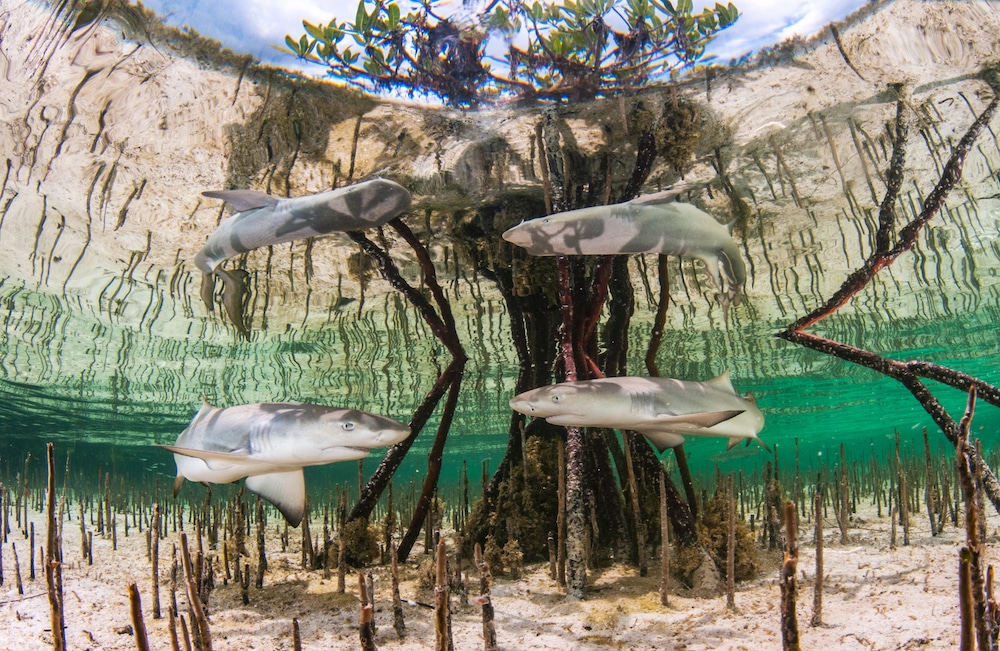
© Anita Kainrath/UPY2020
Kainrath, from Vienna, explains the challenges in producing the image: “I was standing in knee-high water, trying to hold my camera still, waiting for the sharks, while mosquitoes and sand-flies were feasting on me! After about an hour the lemon shark pups finally came into photographic range and I was able to make this image.”
Judge Rowlands commented: “Her perseverance has definitely paid off with a beautifully balanced and observed image.”
The Underwater Photographer of the Year contest is based in the UK, and makes two awards specifically to British photographers. Nick More, from Devon, England was named as British Underwater Photographer of the Year 2020 for his pop-art style photograph “Rabbitfish Zoom Blur” taken in Indonesia. “I created this effect in camera,” explains More, “by zooming my lens at the same time as I hit the shutter. My flash has frozen the central fish while the ambient light is blurred by the zooming.”
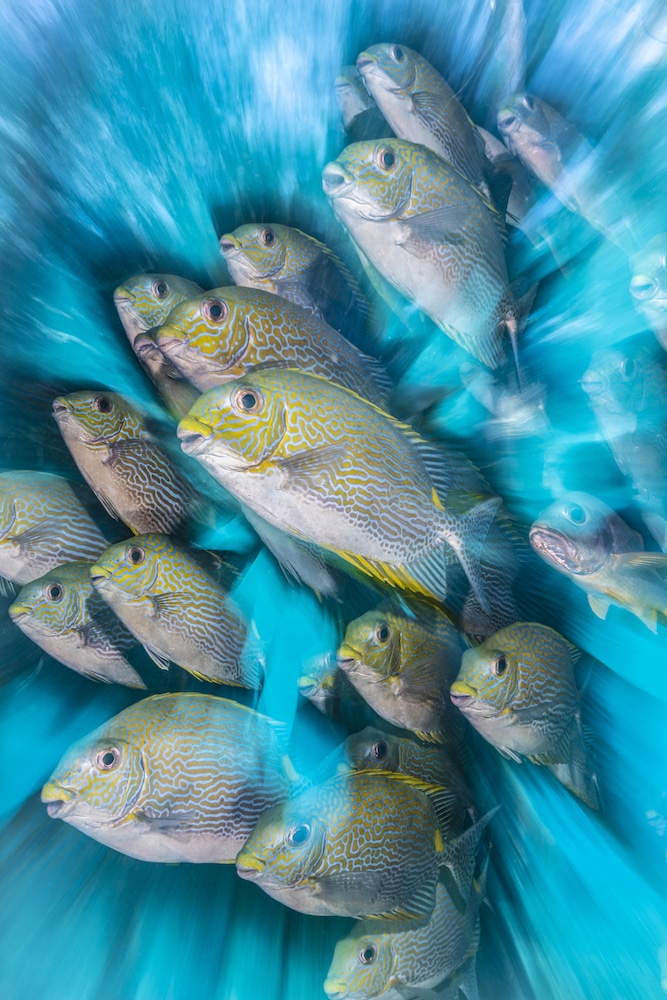
© Nick More/UPY2020
The title of Most Promising British Underwater Photographer 2020 goes to Nur Tucker from Wimbledon, London for an artistic panning photo of a seahorse. Her creative image “Commotion in the Ocean” uses an in-camera double exposure to create a feeling of waves surrounding this seahorse. Tucker explains: “I love experimenting and I have tried many different techniques, with varying degrees of success! After many attempts, everything came together with this shot.”

© Nur Tucker/UPY2020
Underwater Photographer of the Year is an annual competition, based in the UK, that celebrates photography beneath the surface of the ocean, lakes, rivers and even swimming pools. British photographer Phil Smith was the first Underwater Photographer of the Year, named in 1965. Today’s competition attracts entries from all around the world, has 13 categories, testing photographers with themes such as Macro, Wide Angle, Behaviour and Wreck photography, as well as four categories for photos taken specifically in British waters. This year’s judges were experienced underwater photographers Peter Rowlands, Martin Edge and Alex Mustard.
To see all the incredible images that were placed in this years awards, or to learn more about the competition please visit the UPY website by clicking here.
To download the free 180 page downloadable Yearbook please click here.
Gear News
Scubapro Free Octopus Promotion 2024
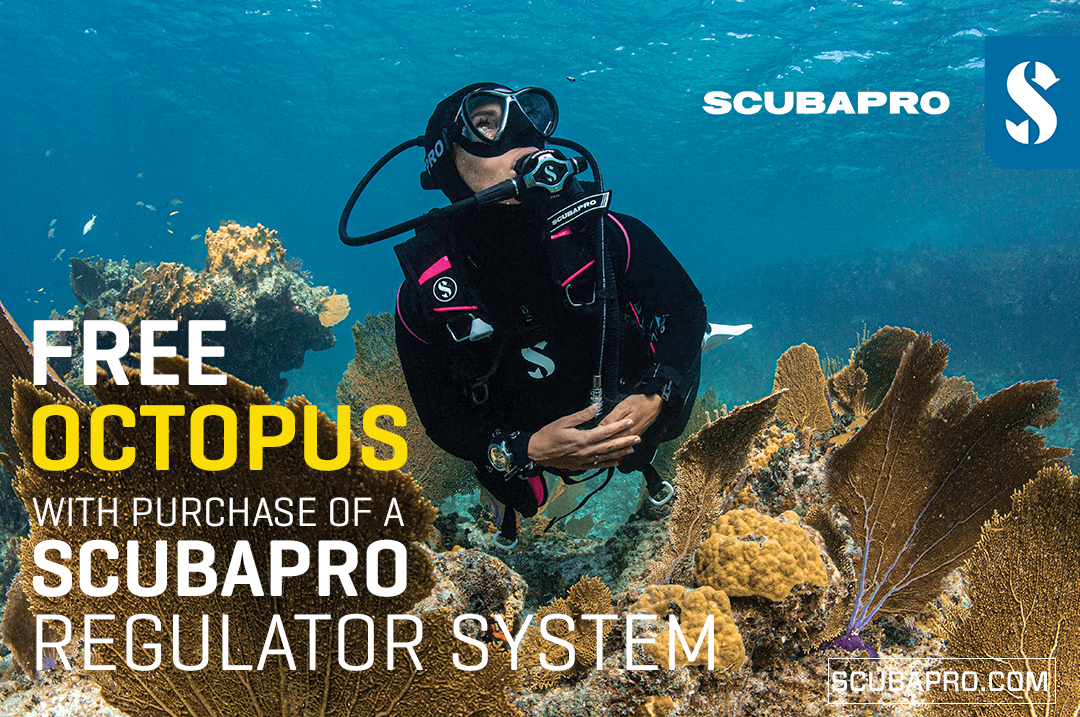
Free Octopus with every purchase of a SCUBAPRO regulator system
Just in time for the spring season, divers can save money with the FREE OCTOPUS SPRING PROMOTION! Until July 31st SCUBAPRO offers an Octopus for free
with every purchase of a regulator system!
Get a free S270 OCTOPUS with purchase of these combinations:
MK25 EVO or MK19 EVO with A700
MK25 EVO or MK19 EVO with S620Ti
MK25 EVO or MK19 EVO with D420
MK25 EVO Din mit S620Ti-X
Get a free R105 OCTOPUS with purchase of the following combinations:
MK25 EVO or MK19 EVO with G260
MK25 EVO or MK17 EVO with S600
SCUBAPRO offers a 30-year first owner warranty on all regulators, with a revision period of two years or 100 dives. All SCUBAPRO regulators are of course certified according to the new European test standard EN250-2014.
Available at participating SCUBAPRO dealers. Promotion may not be available in all regions. Find an authorized SCUBAPRO Dealer at scubapro.com.
More information available on www.scubapro.com.
Blogs
Northern Red Sea Reefs and Wrecks Trip Report, Part 3: The Mighty Thistlegorm
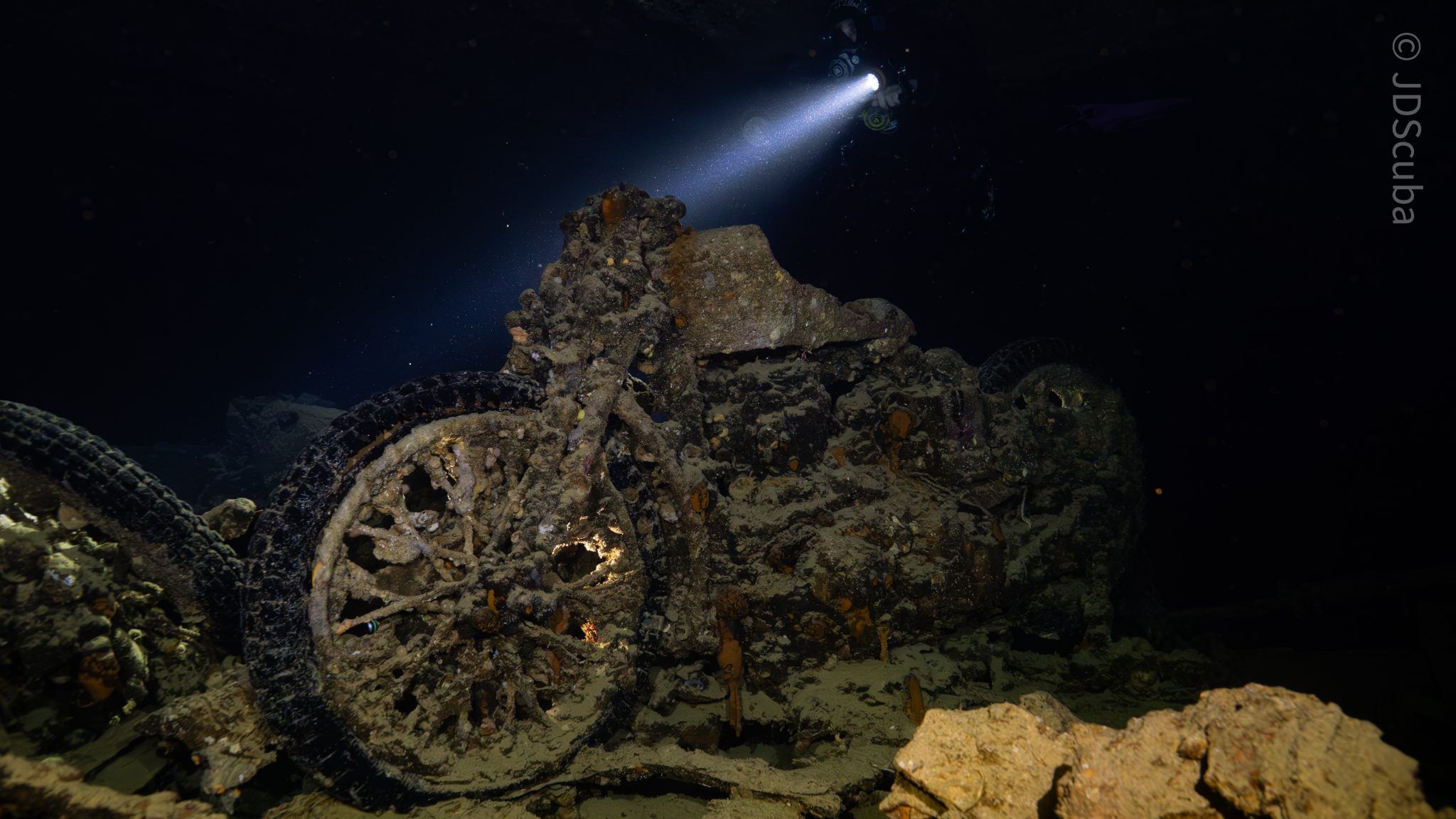
Jake Davies boards Ghazala Explorer for an unforgettable Red Sea diving experience…
Overnight, the wind picked up, making the planned morning dive a bit bumpy on the Zodiacs to the drop point on Thomas Reef. There, we would dive along the reef before descending through the canyon and then passing under the arch before ascending the wall with a gentle drift. The site provided great encounters with more pelagic species, including shoals of large barracuda, tuna, and bigeye trevally.
Once back on the boat, it was time to get everything tied down again as we would head back south. This time, with the wind behind us, heading to Ras Mohammed to dive Jackfish Alley for another great gentle drift wall dive before then heading up the coast towards the Gulf of Suez to moor up at the wreck of the Thistlegorm. This being the highlight wreck dive of the trip and for many onboard, including myself, it was the first time diving this iconic wreck. I had heard so much about the wreck from friends, and globally, this is a must on any diver’s list. Fortunately for us, there was only one other boat at the site, which was a rarity. A great briefing was delivered by Ahmed, who provided a detailed background about the wreck’s history along with all the required safety information as the currents and visibility at the site can be variable.
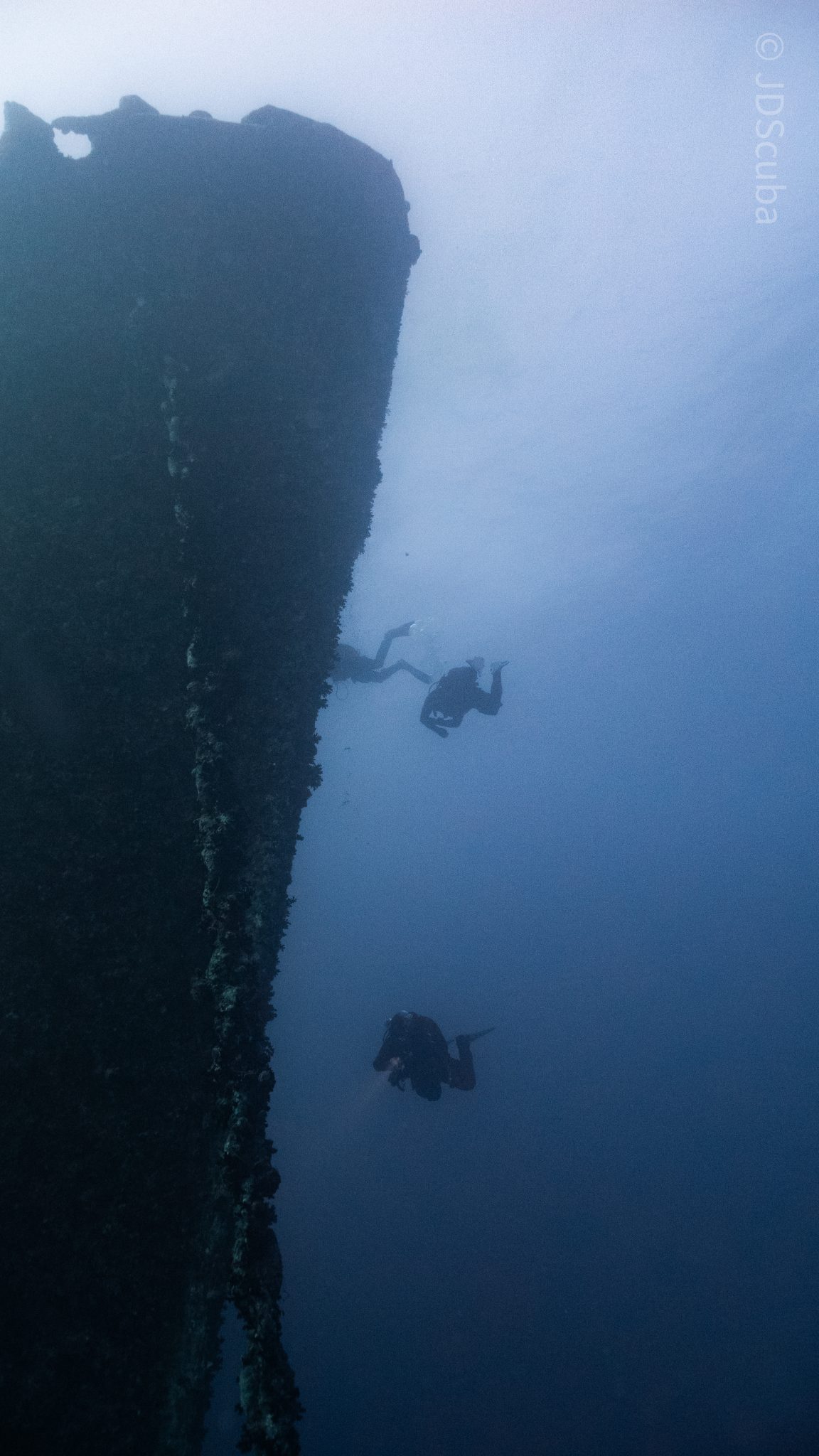
Kitting up, there was a lot of excitement on deck before entering the water and heading down the shoreline. Descending to the wreck, there was a light northerly current which reduced the visibility, making it feel more like the conditions that can be found off the Welsh coast. At 10m from the bottom, the outline of the wreck appeared as we reached the area of the wreck which had been bombed, as our mooring line was attached to part of the propeller shaft. Arriving on deck, instantly everywhere you looked there were many of the supplies which the ship was carrying, including Bren Carrier tanks and projectiles that instantly stood out.
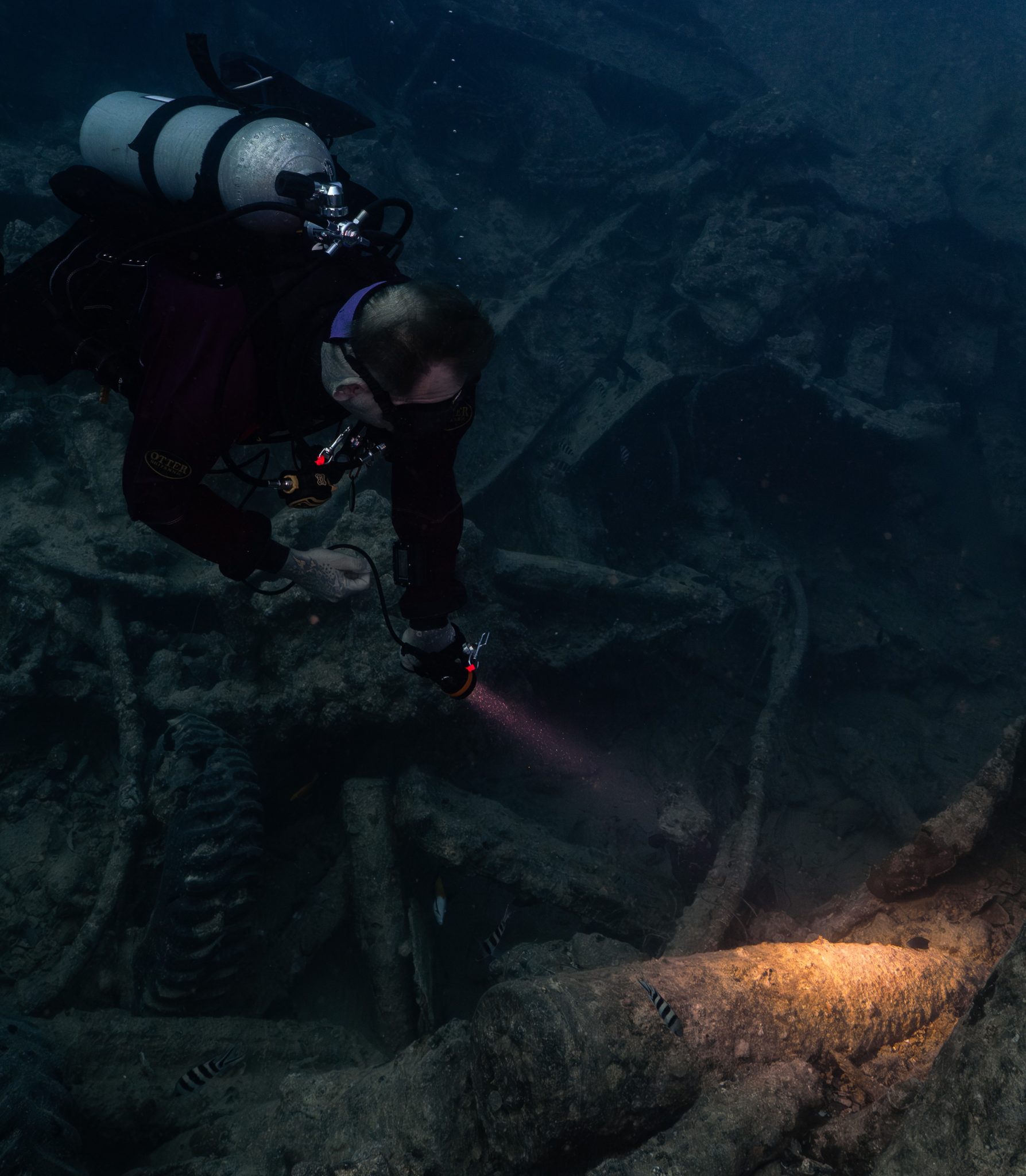
We headed around the exterior, taking a look at the large propeller and guns mounted on deck before entering the wreck on the port side to take a look in the holds. It was incredible to see all the trucks, Norton 16H, and BSA motorcycles still perfectly stacked within, providing a real snapshot in time.
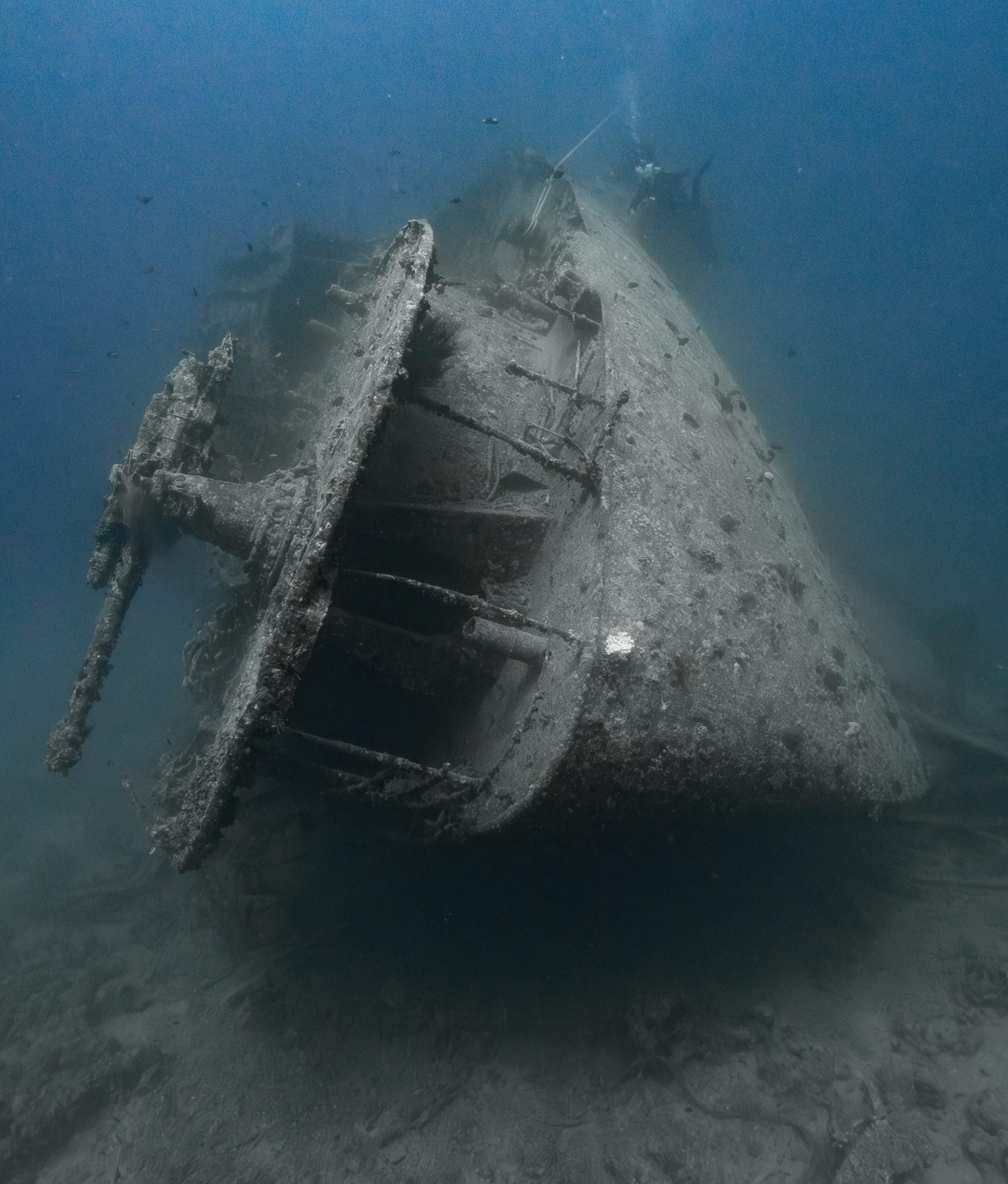
Overall, we had four dives on the Thistlegorm, where for all of the dives we were the only group in the water, and at times, there were just three of us on the whole wreck, which made it even more special, especially knowing that most days the wreck has hundreds of divers. Along with the history of the wreck, there was plenty of marine life on the wreck and around, from big green turtles to batfish, along with shoals of mackerel being hunted by trevally. Some unforgettable dives.
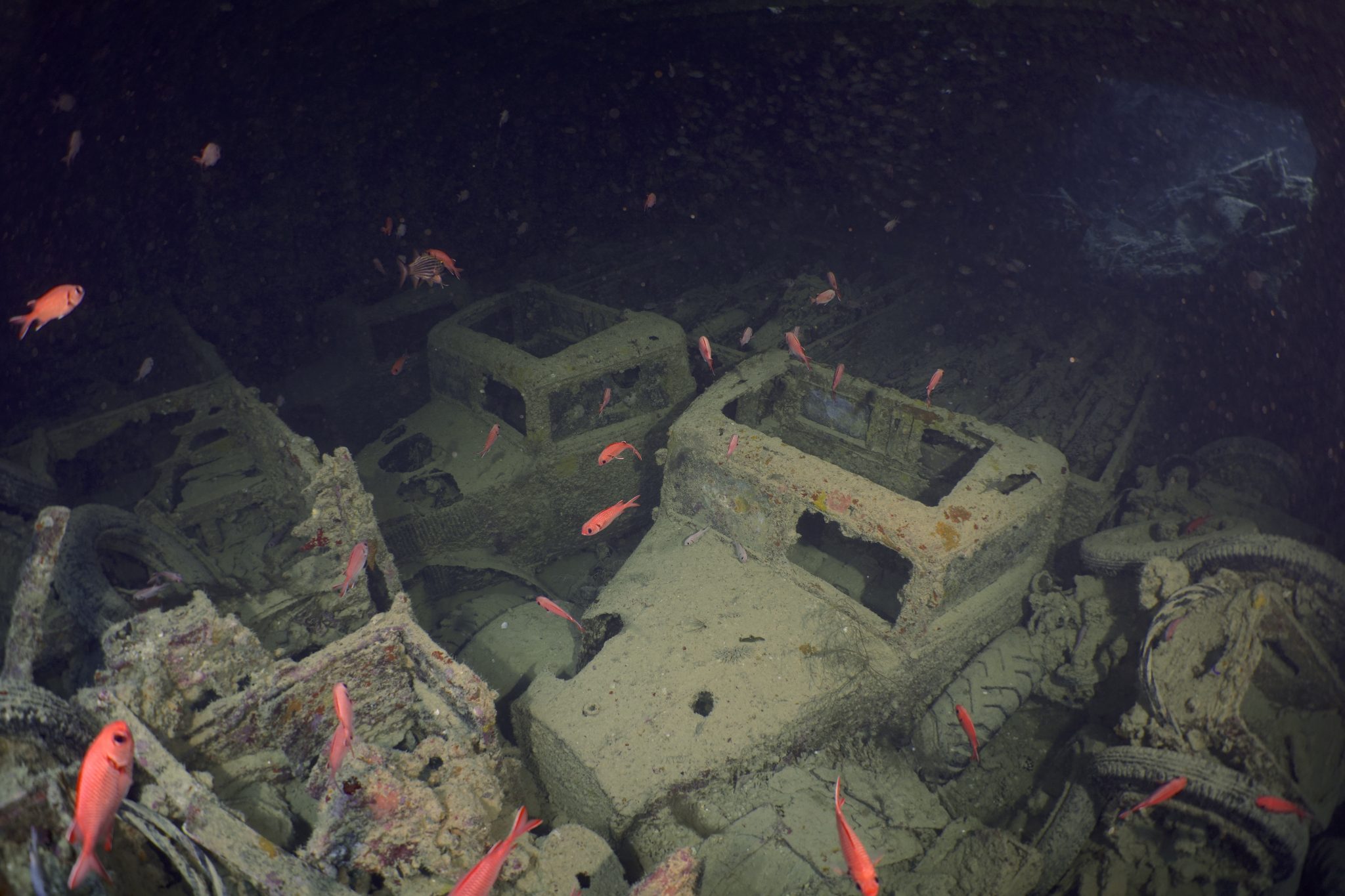
The final leg of the trip saw us cross back over the Suez Canal to the Gobal Islands where we planned to stay the night and do three dives at the Dolphin House for the potential of sharing the dive with dolphins. The site, which included a channel that was teeming with reef fish, especially large numbers of goatfish that swam in large shoals along the edge of the reef. These were nice relaxing dives to end the week. Unfortunately, the dolphins didn’t show up, which was okay as like all marine life they are difficult to predict and you can’t guarantee what’s going to be seen. With the last dive complete, we headed back to port for the final night where it was time to clean all the kit and pack before the departure flight the next day.
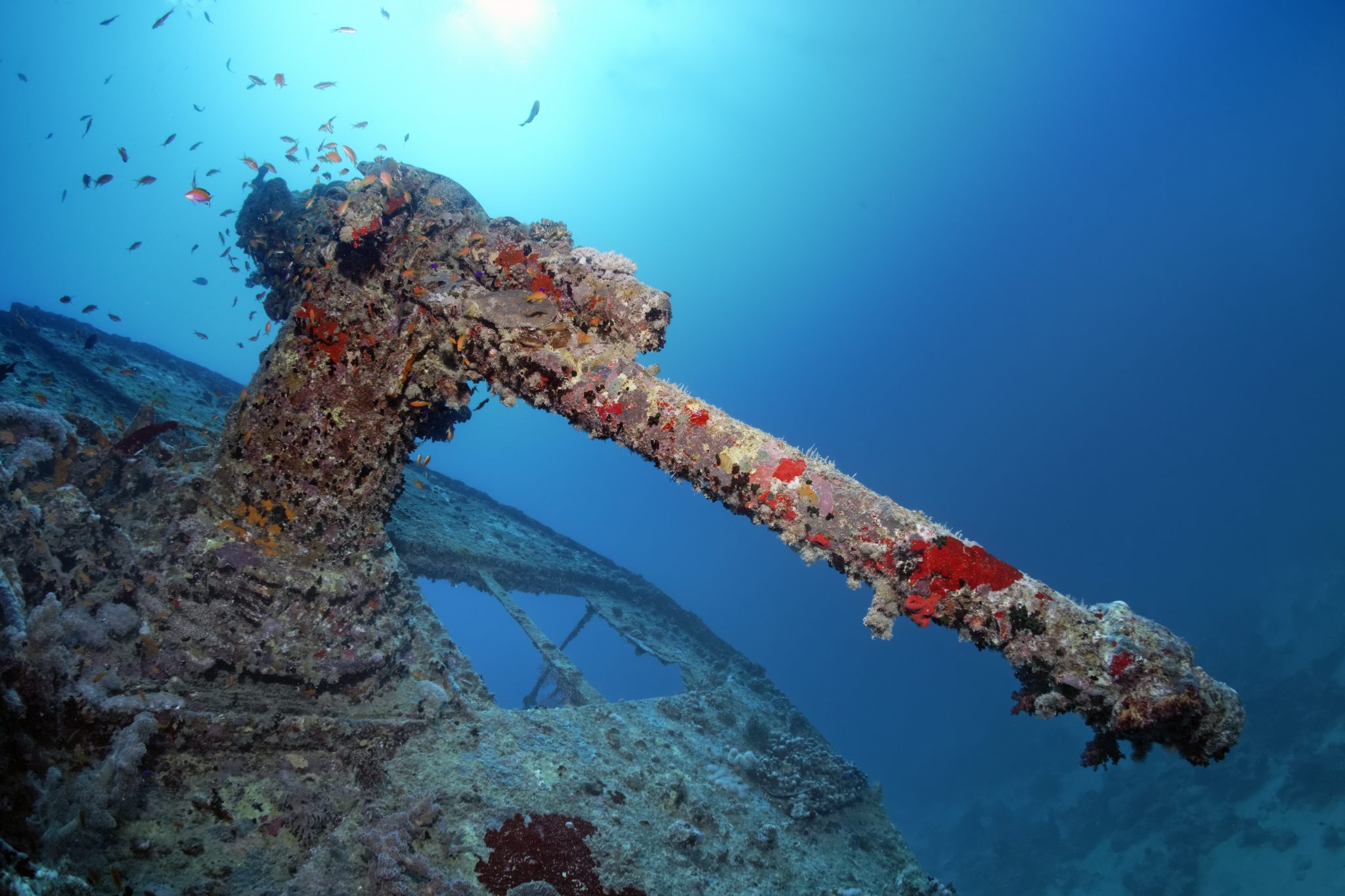
The whole week from start to finish on Ghazala Explorer was amazing; the boat had all the facilities you need for a comfortable week aboard. The crew were always there to help throughout the day and the chefs providing top quality food which was required after every dive. The itinerary providing some of the best diving with a nice mixture of wreck and reef dives. I would recommend the trip to anyone, whether it’s your first Red Sea liveaboard in the Red Sea or you’re revisiting. Hopefully, it’s not too long before I head back to explore more of the Red Sea onboard Ghazala Explorer.
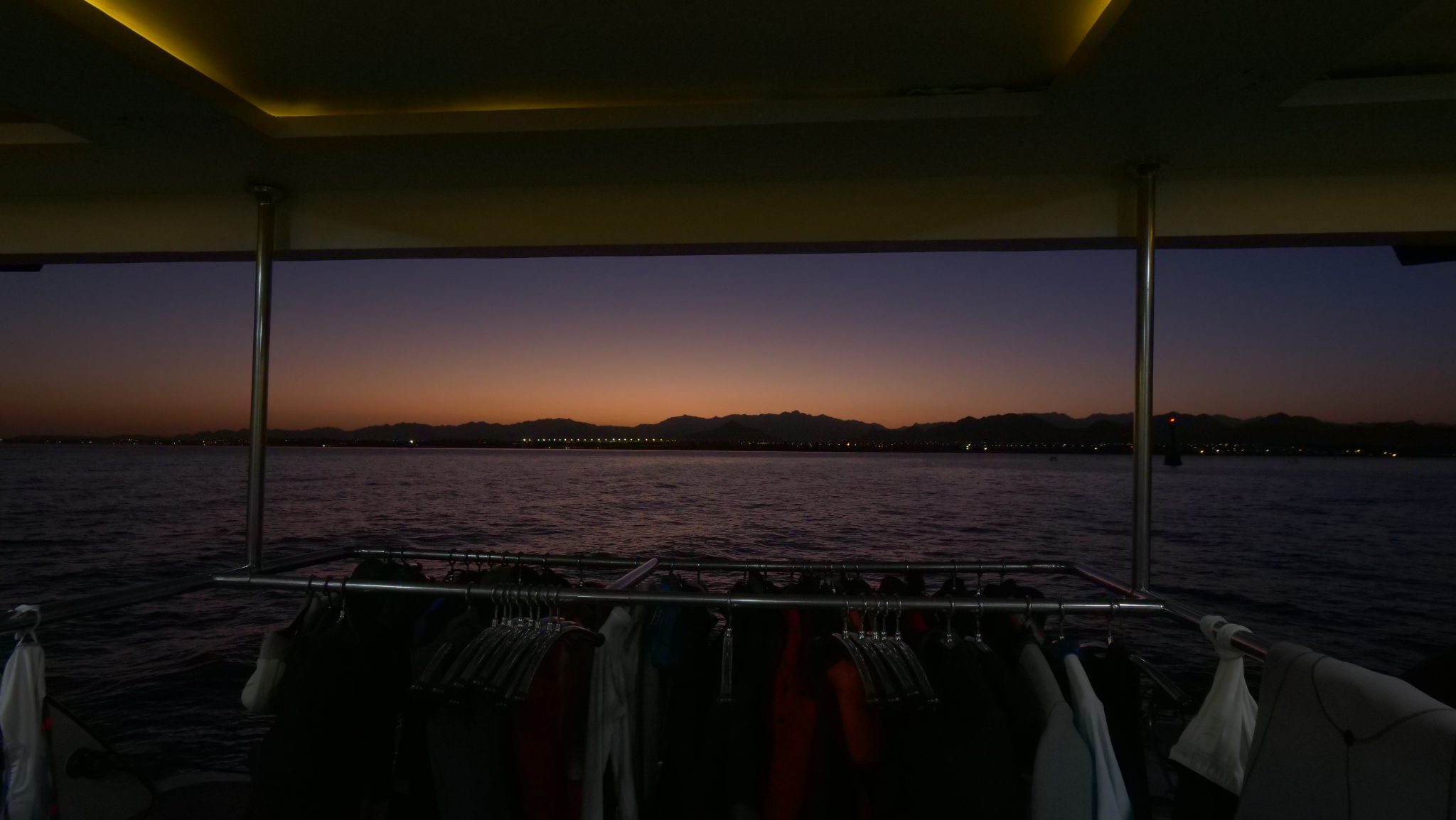
To find out more about the Northern Red Sea reef and wrecks itineraries aboard Ghazala Explorer, or to book, contact Scuba Travel now:
Email: dive@scubatravel.com
Tel: +44 (0)1483 411590
Photos: Jake Davies / Avalon.Red
-
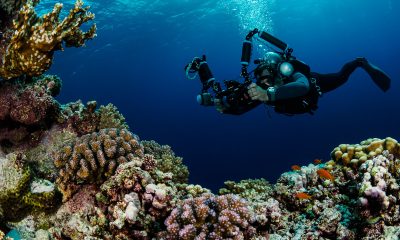
 News3 months ago
News3 months agoHone your underwater photography skills with Alphamarine Photography at Red Sea Diving Safari in March
-
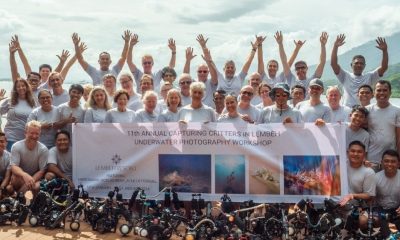
 News3 months ago
News3 months agoCapturing Critters in Lembeh Underwater Photography Workshop 2024: Event Roundup
-
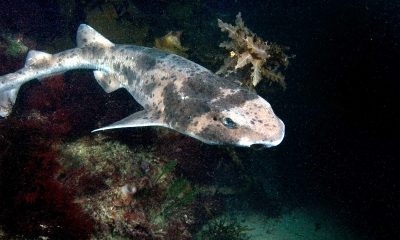
 Marine Life & Conservation Blogs2 months ago
Marine Life & Conservation Blogs2 months agoCreature Feature: Swell Sharks
-

 Blogs2 months ago
Blogs2 months agoMurex Resorts: Passport to Paradise!
-
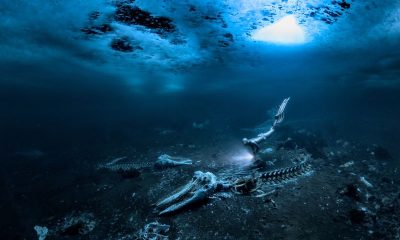
 Blogs2 months ago
Blogs2 months agoDiver Discovering Whale Skeletons Beneath Ice Judged World’s Best Underwater Photograph
-

 Gear Reviews3 months ago
Gear Reviews3 months agoGear Review: Oceanic+ Dive Housing for iPhone
-
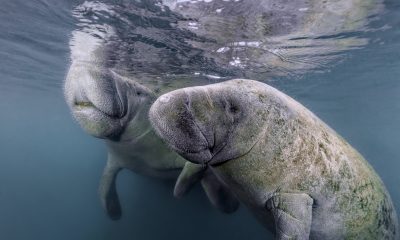
 Marine Life & Conservation2 months ago
Marine Life & Conservation2 months agoSave the Manatee Club launches brand new webcams at Silver Springs State Park, Florida
-
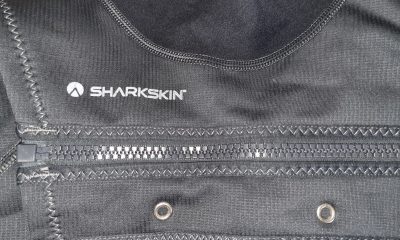
 Gear Reviews2 weeks ago
Gear Reviews2 weeks agoGEAR REVIEW – Revolutionising Diving Comfort: The Sharkskin T2 Chillproof Suit







